by Ken Gargett
Hunter Valley Semillon is one of the more curious styles of wine likely to be encountered. Most wine lovers from outside Australia (indeed outside of the eastern Australian states of New South Wales and Queensland) treat it with a little disdain, have never tried it or perhaps even heard of it. The UK has proved a good export market and producers such as Tyrrells have been successful in the USA.
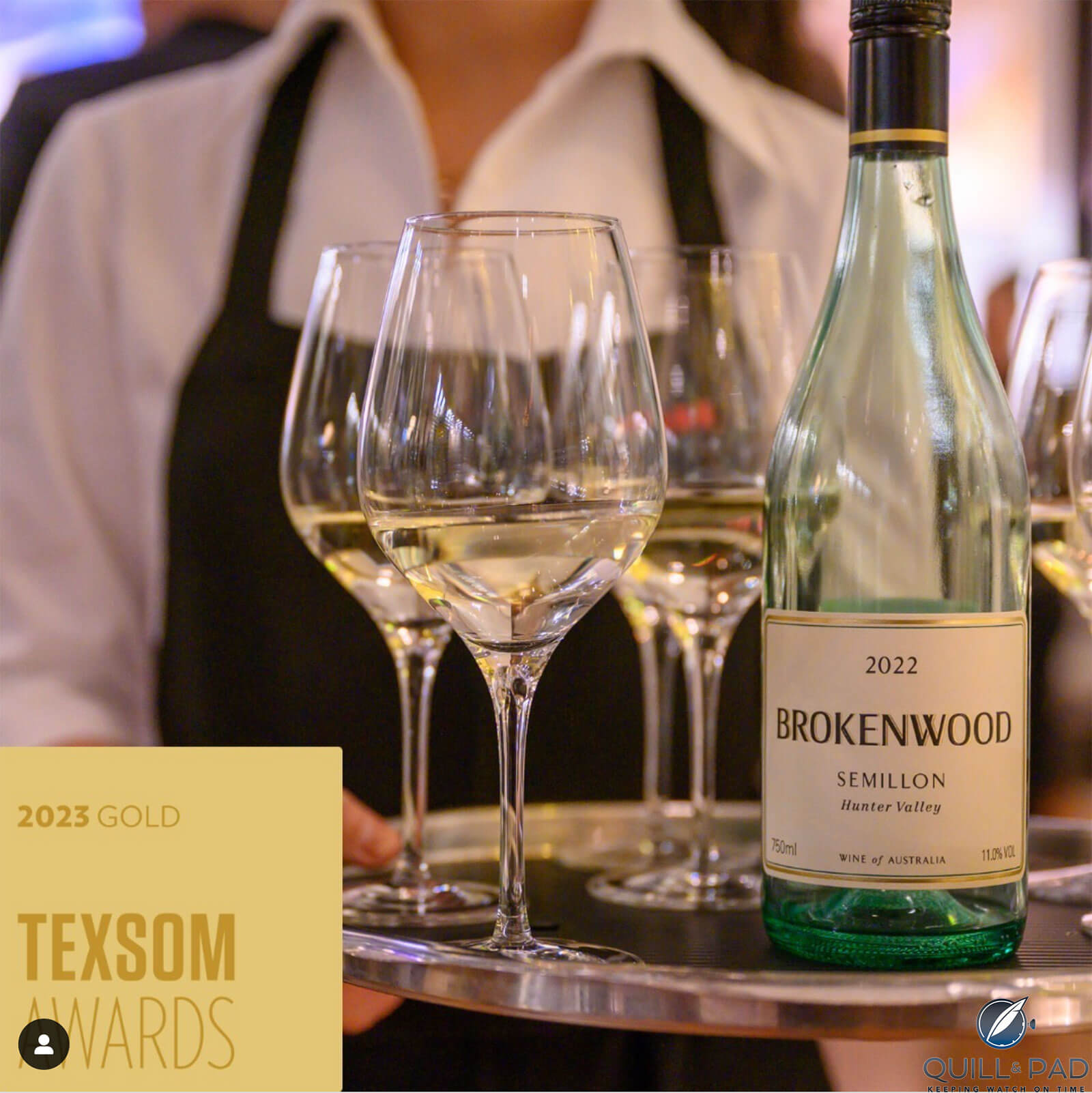
Brokenwood Semillon 2022
Semillon is a fine white variety that hails from the Bordeaux region in France and is best known as a crucial, indeed perhaps the crucial, variety used for Sauternes. It does suffer from botrytis, making it ideal for the purpose as it is responsible for the Sauternes’ Noble Rot. It is also part of dry white Bordeaux, as happens in many regions, in conjunction with Sauvignon Blanc. South Africa has small plantings, and there is interest in California, Oregon and New Zealand.
It is Australia, however, where the variety has created a niche as a single variety, dry style. And the Hunter Valley in New South Wales, Australia is ground zero for that. Indeed, grown anywhere else in Australia and we have a different wine to those from the Hunter.
These days, the great white of Australia is undoubtedly Chardonnay, though Sauvignon Blanc has made significant steps in the last decade or two. If we go back several decades, even a century or two, it was Riesling and Semillon which held the mantle. Indeed, it surprises many to learn that as recently as the 1970s, 50% of the famous terra rossa in Coonawarra was planted to Riesling. The ‘70s saw a huge boom in Australian white wines and these varieties were at the forefront. Sort of.
The problem was that there was no label integrity in those days. A winemaker could, and very often did, simply label wines with what they thought the market wanted rather than reflect what was actually in the bottle. So much of the ‘Riesling’ sold had not a drop of the real thing in it.
Producers of genuine Riesling labeled their wines ‘Rhine Riesling’ to distinguish them from the swimming pools of non-Riesling Riesling. These days, this is all carefully monitored.
Semillon has a history in this country nearly as old as the history of the British arriving on its shores. Its success has seen Master of Wine Jancis Robinson refer to it as ‘Australia’s gift to the world’. So why is it not more internationally recognized and loved?
More than half of the 65 designated wine regions in Australia grow Semillon. In fact, despite the fame of the Hunter, the Riverina grows more than half of all of Australian Semillon. The Barossa has some fine examples which can age, though they are the exception. Most see time in oak.
And there are botrytis Sems which can be truly delicious – De Bortoli’s Noble One is the pick. The West blends it with Sauvignon Blanc in the style of white Bordeaux, although the New Zealand ‘Sauvalanche’ of recent years has hurt those wines. Why the inevitably less complex and less interesting Sauvignon Blanc gets such love has long been a mystery to me. Why consumers prefer it to the infinitely more interesting Semillon, and for that matter, Riesling, is beyond me.
It is the Hunter Valley in NSW, which is most inextricably linked to this variety, and the combination has produced a number of the greatest white wines ever made in this country.
What is so special? In days gone by, young Semillon was an unexciting and utterly unambiguously neutral style. Not unpleasant by any means, but giving no hint of the glories which would unfold in the coming years. The wines were, and are, unoaked and relatively low alcohol – around 10 to 11%. They were very much ‘ugly duckling yet to blossom into the glorious swan’ wines if ever there were any. Time, however, would work its magic and these wines, which could live decades, transformed.
These days, the style has been modified a little, still very much age-worthy, but now more approachable when young, offering more flavor. Wineries like Brokenwood are at the forefront of this movement. In addition, a number of wineries release an array of different Semillons, including some for early drinking, while holding others back in their cellars for extensive aging before release to the market.
Young Semillon is ideal for delicate seafood dishes, oysters, grilled whiting, lighter Asian dishes and more. As the wines get richer, they can accompany more complex dishes involving chicken, veal, roasts, certain cheeses, and even game.
Back in the 1960s and 1970s, Lindeman’s offered incredible examples. While I am not so ancient as to have been enjoying them at the time, generous friends provided bottles in later years, when they had developed the magic that time, often a decade or two, conveys. Memorable wines. They were released under an array of names – White Burgundy, Chablis, Riesling and something with the curious name of Porphyry (usually, Porphyry Sauternes).
There was the legendary Lindeman’s Hunter River Chablis 1970 Bin 3875 with its 18 trophies and 24 gold medals, their Hunter River White Burgundy 1968 Bin 3470, Hunter River Riesling 1968 Bin 3455 and the Hunter River Porphyry 1956 Bin 1270. Hock was another popular name.
And yet, despite the naming, every single one of these wines was Semillon. It is possible that there were very minor contributions from Verdelho and/or Traminer.
If we go back even further, prior to Federation (January 1, 1901), Semillon in Australia was known as Shepherd’s Riesling.
Why Semillon and why the Hunter?
According to Max Lake in ‘Hunter Wine’, written in 1964, Semillon arrived in Australia from two sources – in the James Busby collection via Luxembourg and from vineyards in South Africa’s Cape region. Semillon was No. 60 in Busby’s Catalogue. Busby provided advice suggesting the planting of Semillon in the ratio of 2/3rds Semillon to 1/3rd of a blend of five other Bordeaux whites – “Sauvignon, Rochalin, Blanc-Doux, Pruneras and Muscade”.
In South Africa, the Cape also played a major role, where Semillon, once known as Greengrape or Groendruif, made some of their first wines back in the mid-1600s. Iain Riggs from Brokenwood, who will appear in our story again, kindly sent me copies of some photographed pages from a friend’s history books (although name of book and author escape me) detailing life in South Africa in the late 1600s. The vines, at the time, were described as rather unsuccessful, providing ‘wine of a crab-like taste’. One might think no wonder they were unsuccessful if they had such a taste, but the reference to ’crab’ is to small, bitter crab apples.
There are many who believe that our first Semillon arrived from the Cape, with the First Fleet picking up vines on their stopover at the Cape, and Governor Phillip delivering the vines to the new settlement in 1788. Many of the vines planted at Sydney Cove failed to survive their first summer. Some which did were moved to Parramatta where they had more success.
Whether they were Greengrape or Busby’s Semillon, they soon became known as Shepherd’s Riesling. Around a third of Busby’s cuttings brought to Australia in the 1820’s/1830’s, went to a 28-acre nursery in Sydney, run by Thomas Shepherd. Very soon, the variety was known as Shepherd’s Riesling, or even Shepherd’s White. Iain Riggs believes they were dubbed Riesling because, at the time, Riesling was considered the premium white grape in the world and attracted the highest prices.
It is believed that Semillon was then taken to the Hunter by James King, one of the region’s pioneers, although there are a range of theories. However it made its way there, it did not take long before the ‘Shepherd’ was dropped and replaced with ‘Hunter Valley’ or ‘Hunter River’ Riesling.
Why not just call it Semillon? In those days, selling a wine called Semillon was commercial suicide (have things changed that much?).
Despite the Savvy fad and the rise of Chardonnay, many winemakers in the Hunter still value it above all other whites. The Hunter is a warm region and, when Semillon is picked early, around the 10 to 10.5% potential alcohol with a high level acidity still present. and then made without any oak influence at all, it has the potential for extensive aging and transformation.
With time, Semillon can age and improve, becoming astonishingly complex, more than almost any other white variety. In the longevity stakes, it sits with Chenin Blanc and Riesling. Good vintages, especially now that they are bottled under screwcap, can last decades if well cellared. The transformation is Cinderella-like.
So, what to expect? Younger Semillon offers freshness, balance, crispness, an intriguing mix of intensity and delicacy, with gentle notes of dry herbs, lanolin, straw and citrus, while aged Semillons, sometimes after just four to six years, though possibly decades (vintages play a role, of course), transform into a richly flavored, complex wine, often appearing to have seen oak (it won’t have), with flavors of toast, lemon butter, honey, nuts and vanilla. Freshness and delicacy replaced with complexity, weight, length and depth of flavor, yet the bright, often vibrant, though soft acidity remains.
Inexperienced (and often very experienced) wine lovers will be convinced that an aged Semillon has spent time in oak, but Hunter Sem is made in tanks. They do not see oak at all. One considerable advantage that this offers consumers is that the lack of oak eases the cost of production, meaning that the wines can be offered at a much reduced price in comparison with, say, an equivalent Chardonnay.
Also, the advent of screwcap has ensured that the wines can now age as intended, rather than having to rely on the vagaries of cork.
As they say in the classics, but wait, there’s more. Semillon is an ideal variety for today’s wine lovers as it is a variety that can well reflect its terroir. We are seeing more and more single vineyard Sems. The simplicity in the winemaking – no oak, as mentioned – ensures that the wine is unencumbered with artifice and representative of its site.
The early years saw wines from Lindeman’s, Tyrrells (Vat 1) and McWilliams (Elizabeth/Lovedale) considered the pinnacle. Those with experience extending well beyond my own, into the dark and distant past also speak glowingly of wines from Drayton’s, Tulloch and Elliott’s. Len Evans established Rothbury in the late 1960s, and it did not take long for their Semillons to join the elite. Once Iain Riggs joined Brokenwood for the 1983 vintage, it too was headed for greater things.
These days, Lindeman’s and McWilliams have perhaps slipped down the rungs. Rothbury has become Hope Estate and I’m not sure who sees those wines these days. Today, Tyrrells and Brokenwood stand out as the exceptional producers. For me, Andrew Thomas ranks alongside them. Young guns (and a few older guns finally catching up) are emerging – Usher Tinkler, Gundog Estate, de Iulius, Scarborough, Peppertree, Audrey Wilkinson, Margan and more.
Brokenwood wines
Brokenwood was one of the very early boutique wineries in Australia, with the unique history of being established by three Sydney solicitors (lawyers, for some jurisdictions), one of whom was Australia’s leading wine writer over the last fifty years, James Halliday. In 1970, the trio of hobby winemakers combined to purchase a 10-acre block at $970/acre. This was a record price for a vineyard, or potential vineyard, at the time.
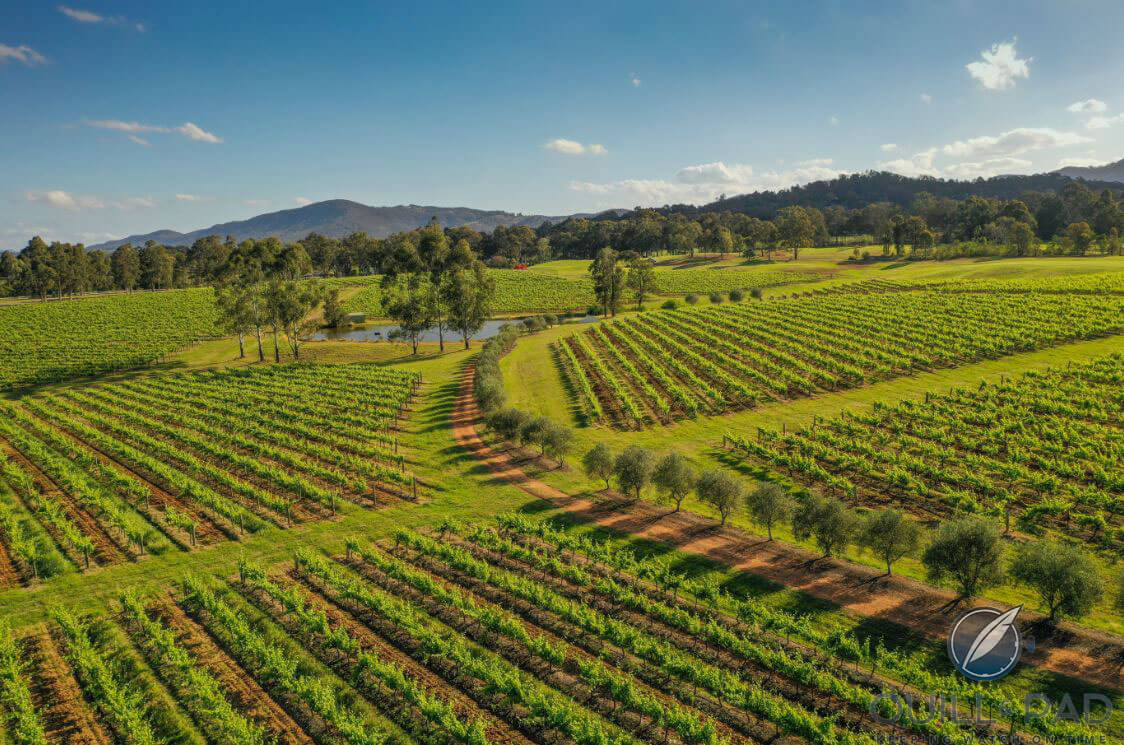
Brokenwood Graveyard vineyard
I say potential vineyard, as it was intended to be a cricket ground for locals. Planted to Shiraz and Cabernet, the first vintage was harvested in 1973 and was warmly welcomed. Picking was by friends and family, with Len Evans using his Bentley to transport the grapes to the winery.
Over the years, a great many of the finest winemakers in Australia, New Zealand and beyond have done a stint at Brokenwood under the wing of Iain Riggs.
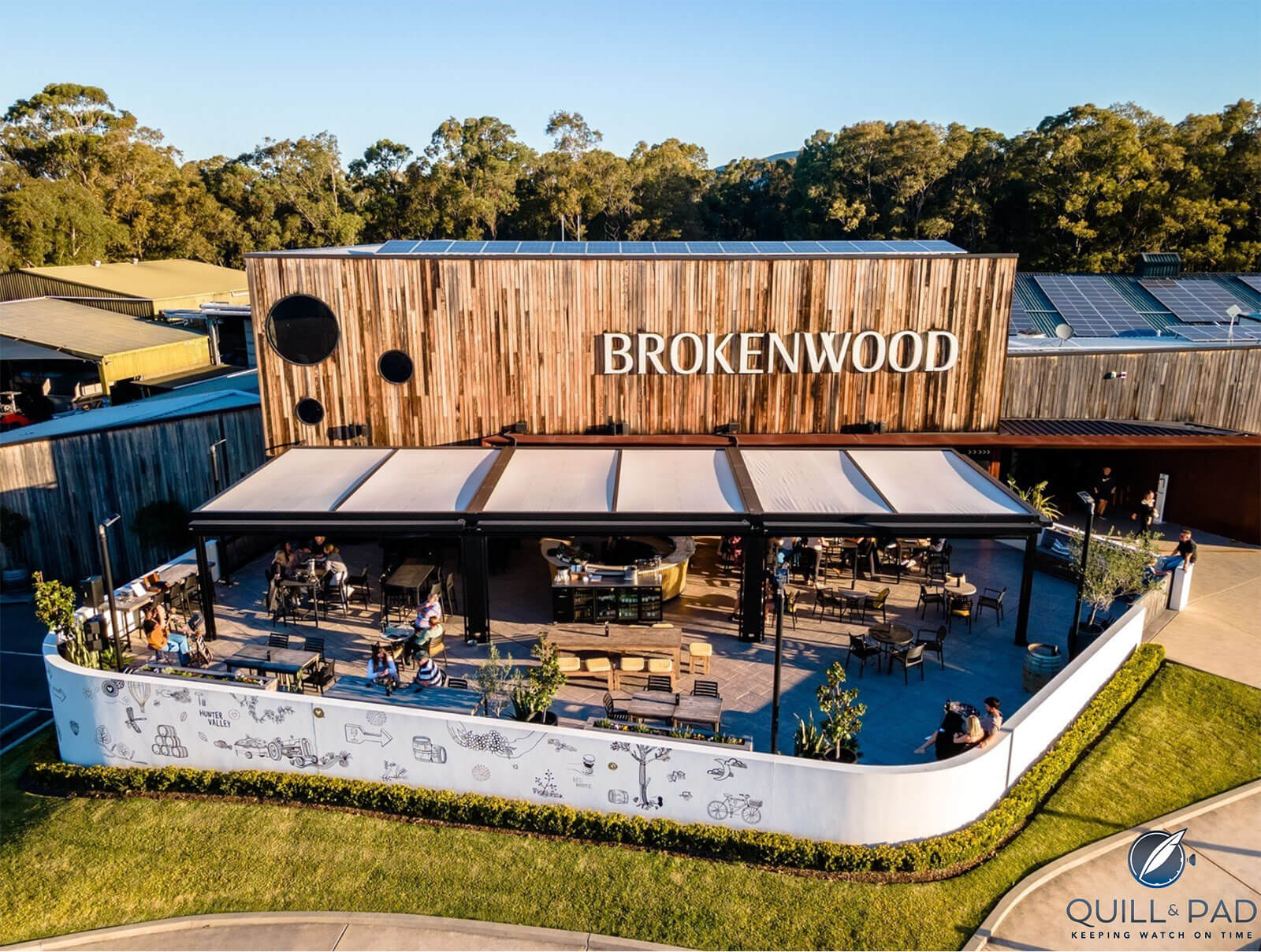
Brokenwood wine estate
Before the arrival of Riggsy, as he is known to all, expansion saw more partners and the purchase of a block intended for use as a cemetery. This became the legendary Graveyard Vineyard.
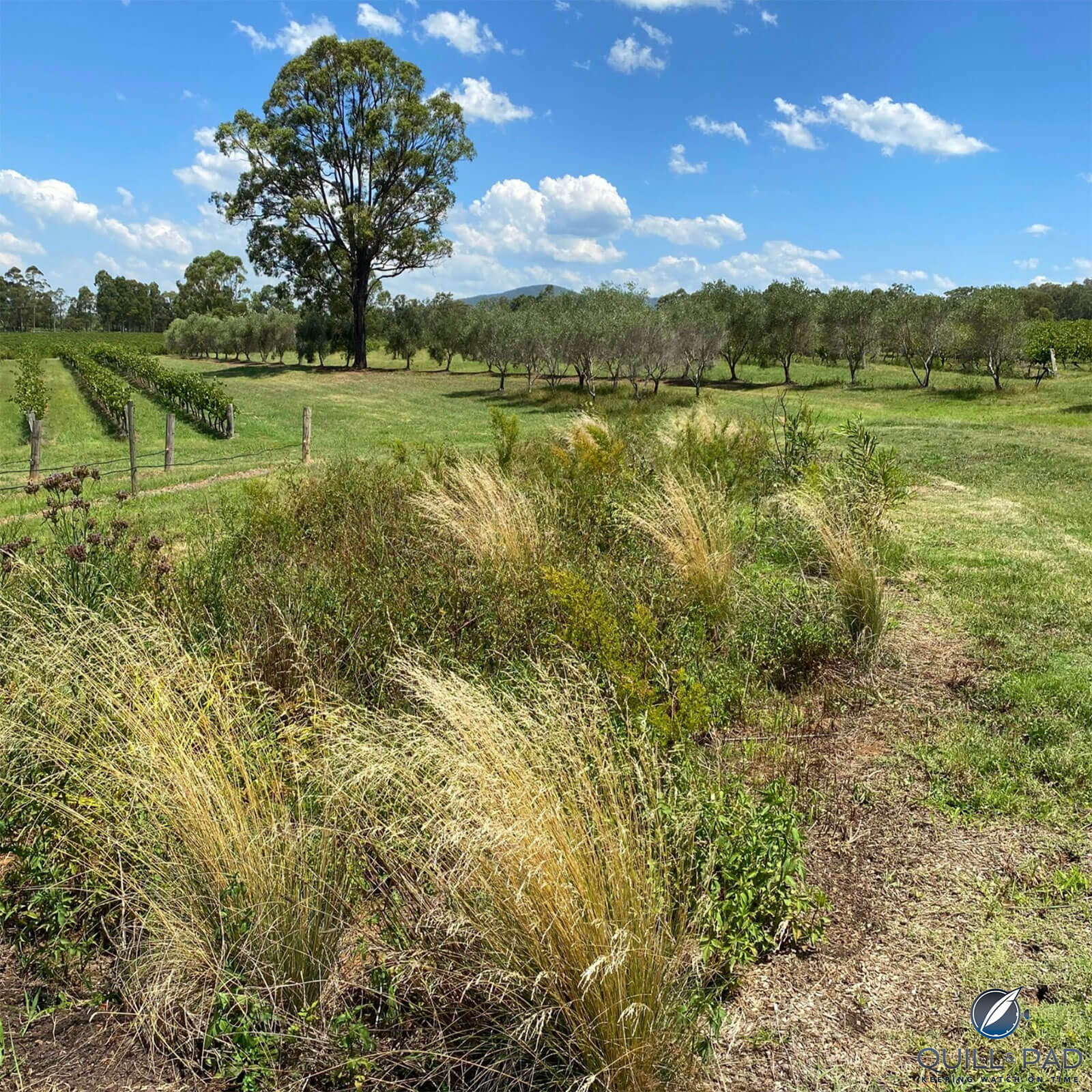
The Brokenwood Graveyard Vineyard is Sustainable Winegrowing Australia (SWA) Certified
Today, the Graveyard Shiraz is seen as the Hunter’s greatest red and has been for many years (I think Tyrrells Four Acres is but a whisker away). The 1986 is surely the finest red from the region since the astonishing 1965 twin peaks from Lindeman’s. Graveyards from recent vintages such as 2017, 2018 and 2019 are right up there as well.
In 1982, Brokenwood decided to add whites to the range, especially Semillon. Iain Riggs was poached from McLaren Vale (you might think it strange to go to such a red-dominated region for a winemaker to expand their white wine program but Riggsy had just won McLaren Vale’s top award, the Bushing King, for a Chardonnay, the 1982 Hazelmere Estate). Riggsy has been in charge since 1983, only retiring in 2020 for Stuart Hordern to step up as Chief Winemaker. Quality has not wavered.
The first Brokenwood Semillon was the 1983. At this time, the fruit was chilled, they used sulfur and skin contact, and did so for the next three vintages. The style was “grassy and approachable” and Murray Tyrrell, never shy of an opinion, declared that that the wines would not age, a cardinal sin for Hunter Sem. As Riggs ruefully admitted, “he was correct”. The style saw the wines go vegetal.
By the early 90s, they had conceded defeat and, for the Reserve Semillon, which later became the ILR, moved to the traditional Hunter style. Sadly, as Riggs says, while there were some very good wines made, it was not until 2002 that they moved to screwcap. Riggs finds that almost all the whites prior to then are “stuffed”.
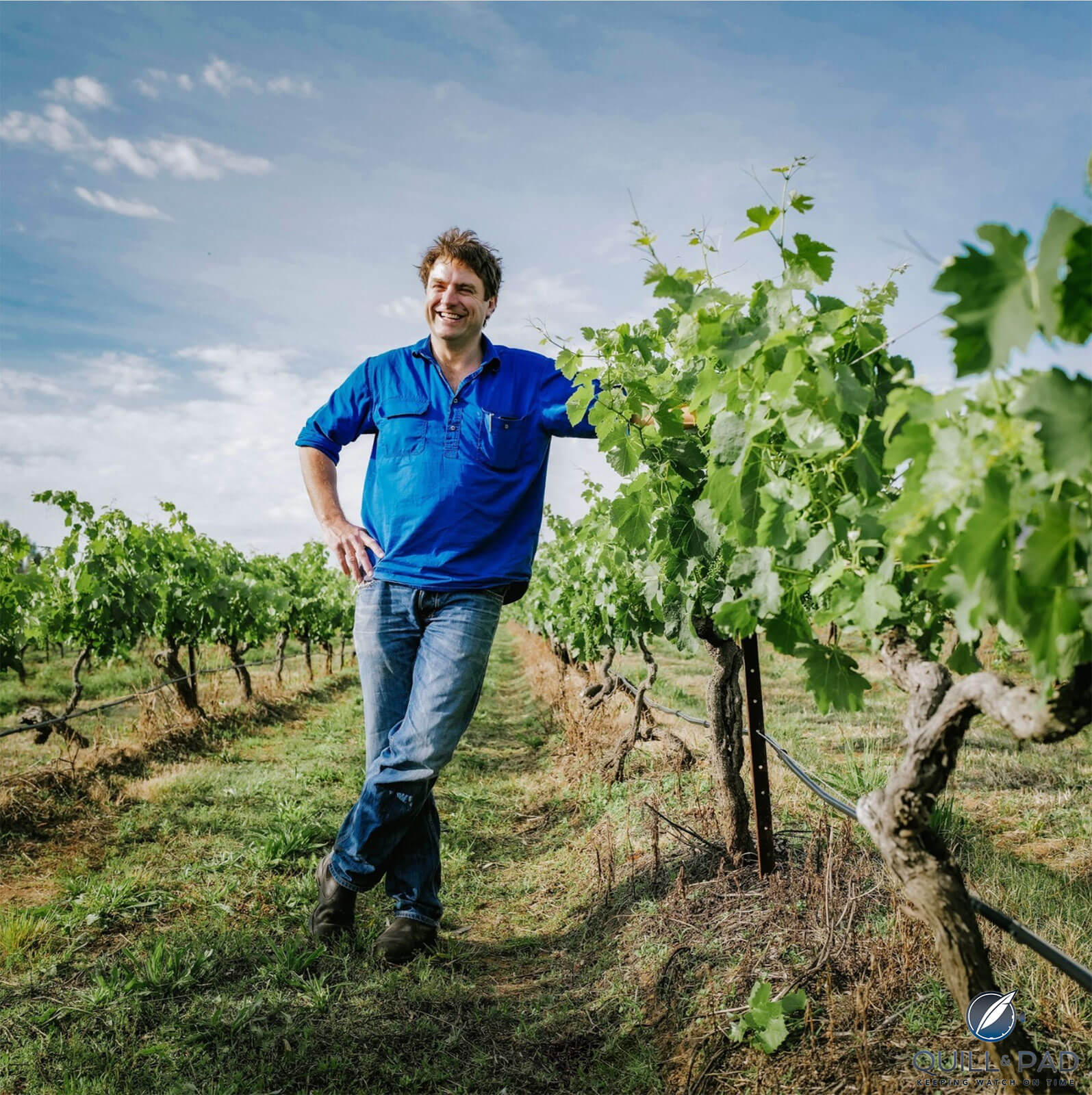
Stuart Hordern, Brokenwood Senior Winemaker
These days, the team aims for around four potential Reserve Semillons each vintage, from their various top vineyards. In time, a decision is made as to which is the best. It will be released as the ILR, previously the ‘Reserve’. In some years, none make the grade. 2016 is a recent example where no wine stepped up.
ILR? It stands for Iain Leslie Riggs, and while Riggsy has undoubtedly copped plenty from friends for having a wine named after himself, anyone who knows him will tell you that he is not an immodest man and that decision would not have been his. That said, no one deserves it more.
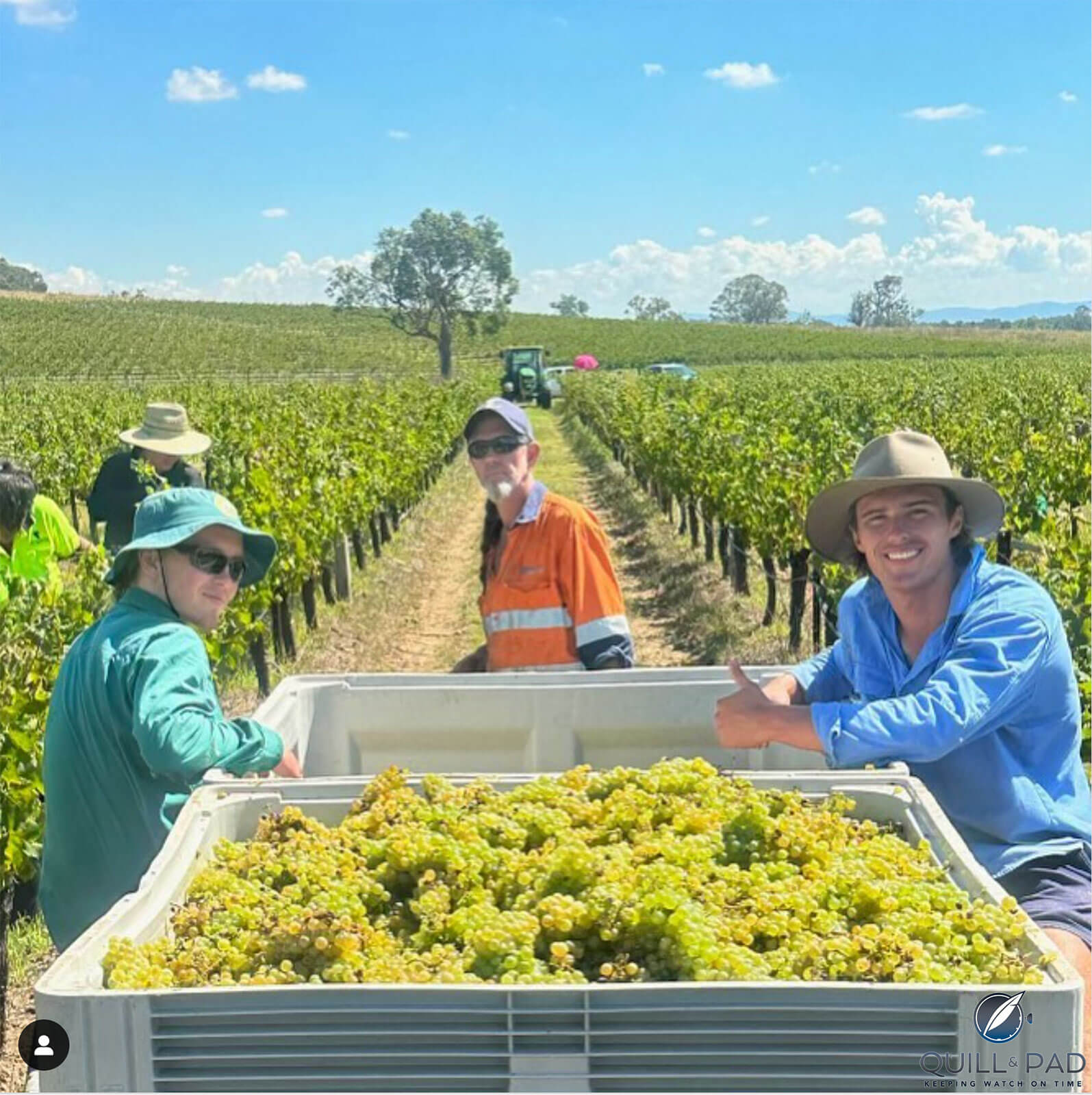
Brokenwood Semillon grape picking
Brokenwood has just released their latest Sems – the standard, a single vineyard effort and the latest ILR. The standard is from the very exciting 2023 vintage; 2022 for the single vineyard wine was a wet year but nowhere does ‘wet’ better than this region – they have had so much practice; while 2017 for the ILR is a stellar year for the region.
Hunter Semillon may not be on your radar for those looking for superb, age-worthy, complex whites, but they should be.
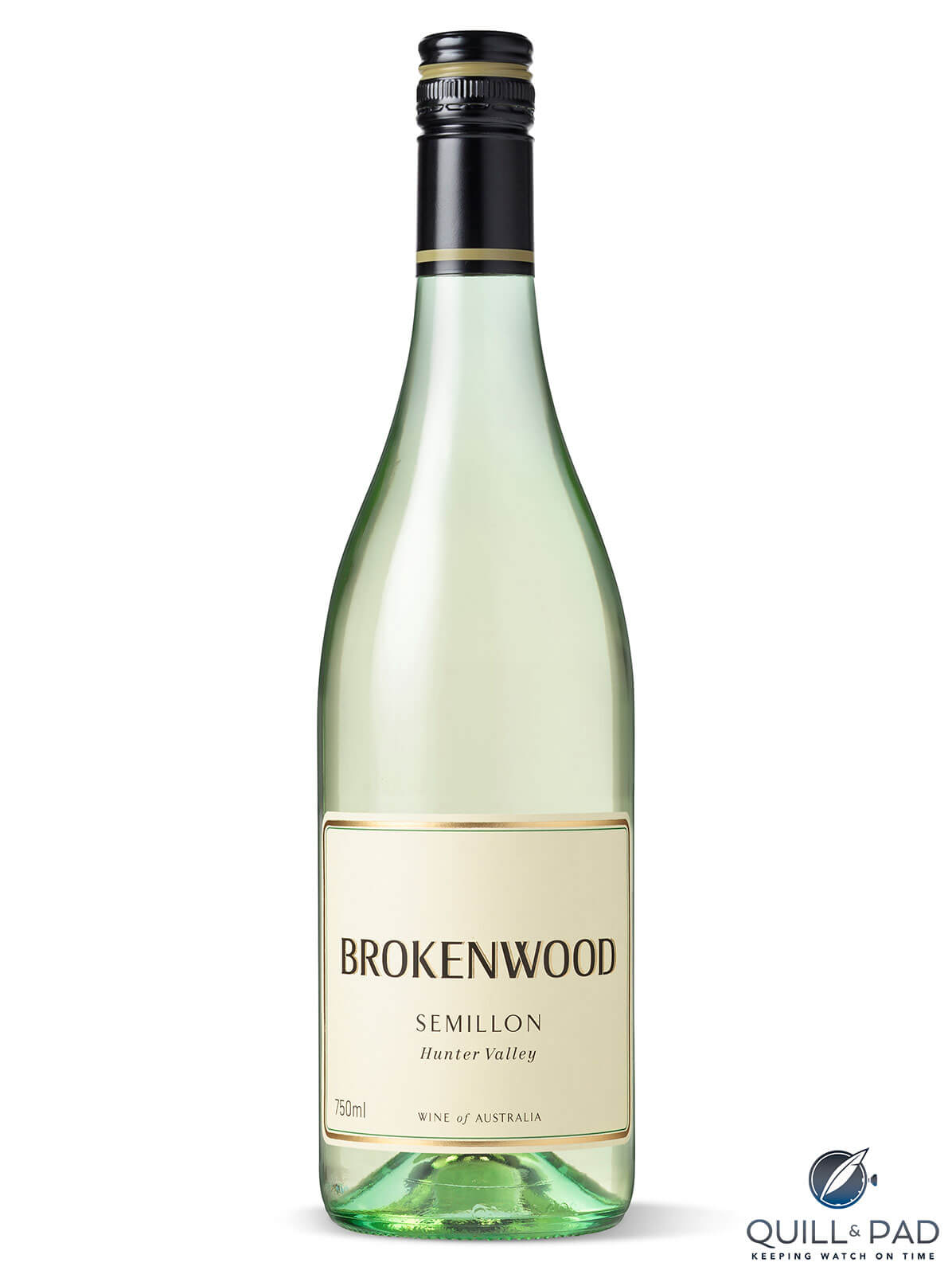
Brokenwood Semillon
Semillon 2023 ($28) – Just 11% alcohol, this has a lovely pale lemon hue. Fragrant nose, citrus, hay, minerals and more. Compelling aromas. There is fine balance and a supple texture. A fine line of acidity. Fresh and bright. Mid length, this is a ten-year proposition. No oak, no malolactic fermentation, no problem. A very fine example of a basic Hunter Sem, plenty of flavor if drinking young and the potential to age and improve. 91.
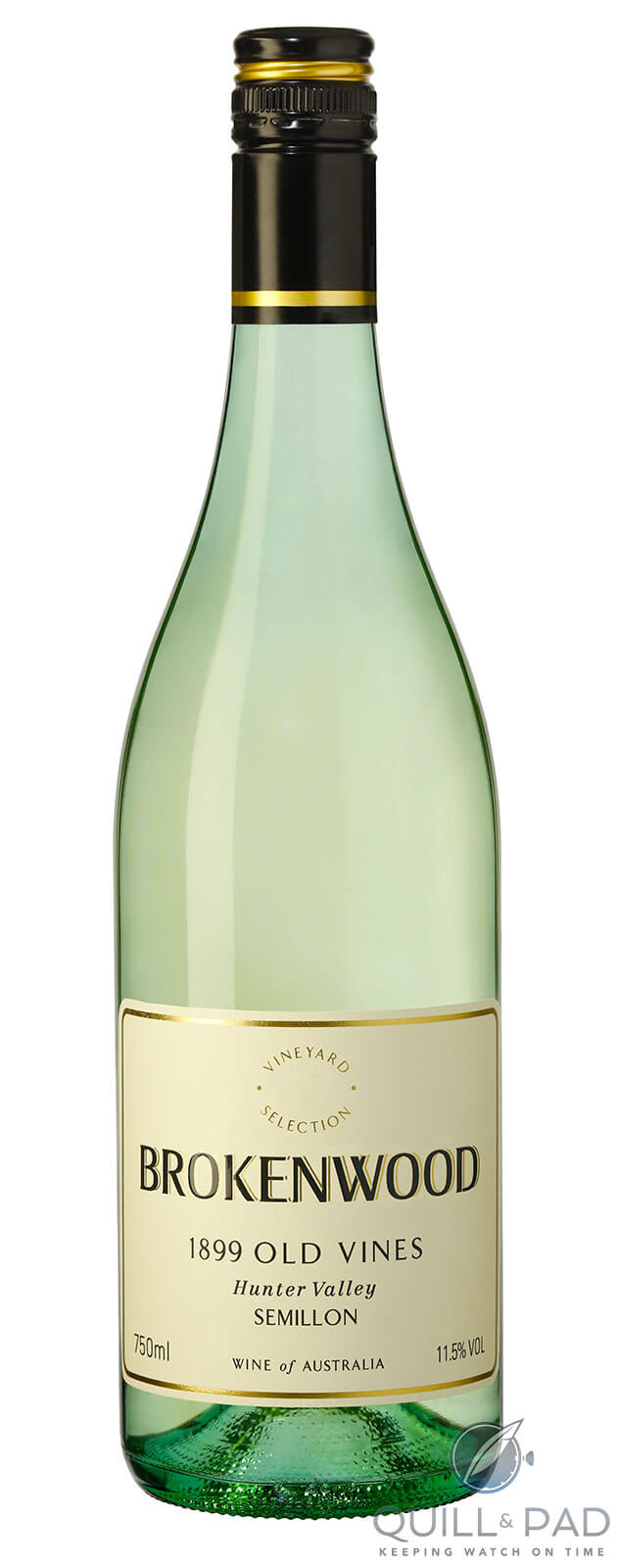
Brokenwood 1899 Old Vines Semillon
1899 Old Vines Vineyard Semillon 2022 ($66) – This is not strictly the typical Brokenwood single vineyard Sem, being the very first ever release of this wine. The vineyard, 1.17 hectares, is opposite their well-known Oakey Creek Vineyard, one of their very best (still early days but the rumor is that the Oakey Creek Vineyard Semillon will be the ILR for 2018). As always, no oak, no malo. 11.5% alcohol.
The color is near trout stream clear, but there is a hint of shimmering gold. The nose is tight, taut and restrained. Still very young, this is a refined and delicate style. We have notes of citrus, especially grapefruit, with river stones. There is some crisp green apple acidity. Good focus, this is built for the long haul. The palate opens up revealing more than is evident on the nose at the moment. Some serious length here, balance and deceptive intensity. One for the future. 15 years plus. Both the wine and score have room to improve. 94.
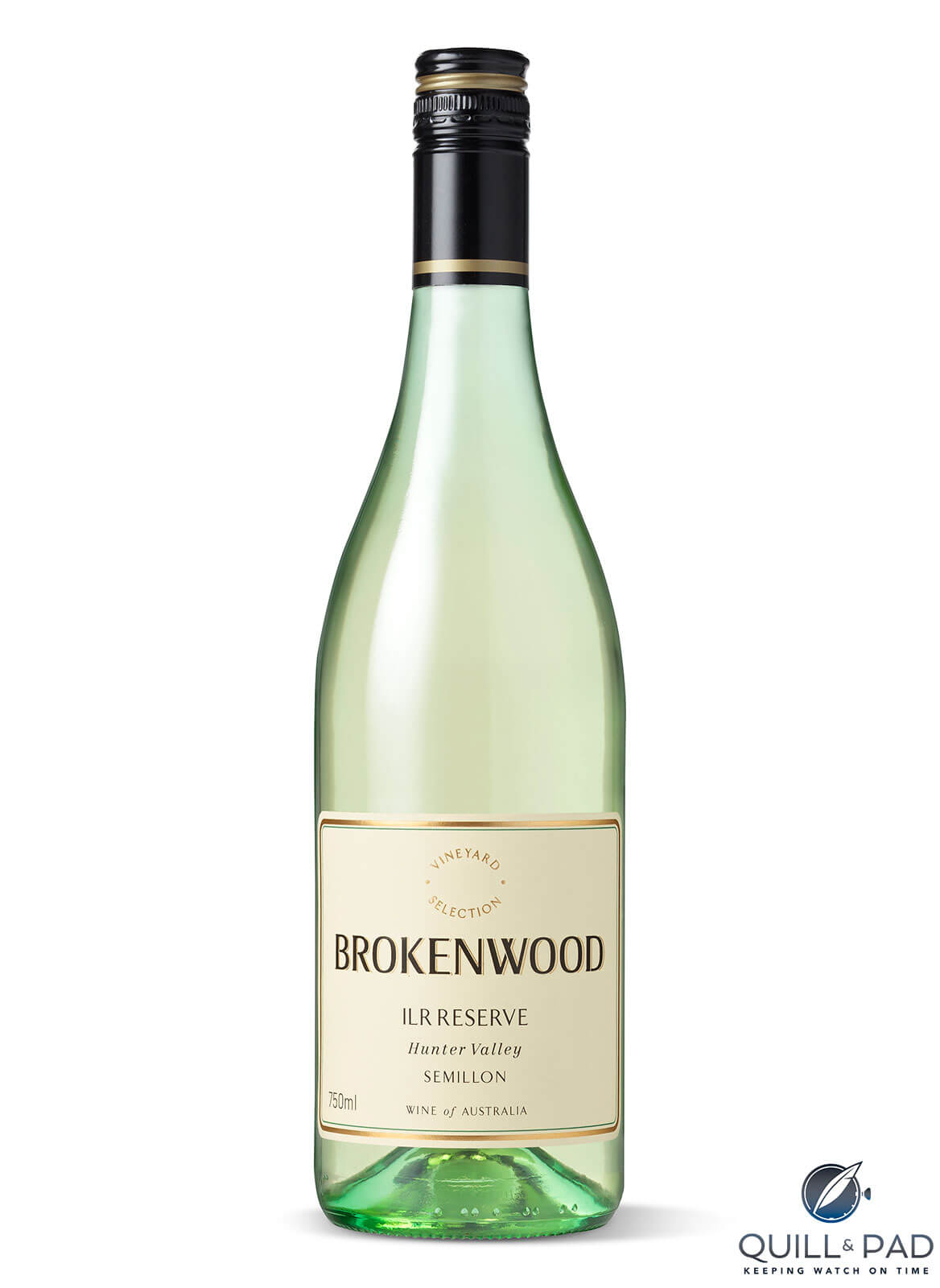
Brokenwood ILR Semillon Reserve
ILR Reserve Semillon 2017 ($100) – The stunning 2014 ILR was from the Trevena Vineyard and they have repeated the dose with the 2017, both stunning vintages. Trevena was planted in 1926 on the white sandy soil adjacent to Hermitage Road. 11% alcohol.
A gleaming very pale lemon hue. The nose reveals early hints of development but there is so much more to come. We have citrus, toast, lemon curd, hints of nuts, a touch of beeswax and glacéd fruits. Great intensity, and yet there is also immaculate balance. Such length! Fine acidity, this wine is just beginning what promises to be a glorious journey. Twenty years plus. After trying this wine, if you are still not convinced that great Hunter Semillon deserves its place among the great white wines on the planet then I cannot help you. While certainly not cheap, a wine of this quality at this price is a ridiculous bargain. 98.
For more information, please visit https://www.brokenwood.com.au/
You may also enjoy:
Chablis: A Top-Class Cru White Wine That Doesn’t Get The Love It Deserves
Leeuwin Estate Chardonnay: Walking the Tightrope between Elegance and Sheer Power
Brokenwood Graveyard And Tyrrell’s 4 Acres Shiraz: Irresistible Australian Hunter Valley Shiraz
World-Famous Wine Regions: Coonawarra, South Australia
Leave a Reply
Want to join the discussion?Feel free to contribute!





















































Hi – we’re the US importer for Brokenwood, Leeuwin Estate, d’Arenberg, Cullen Wines, Penley, John Duval Wines, and a few others. It seems this is a US publication so please let me know if you can mention us in reference to these wines as a source for DTC or distribution in the US.
Thank you!
Michelle